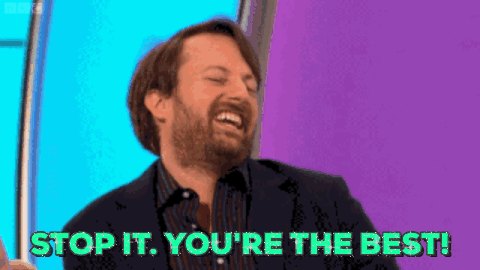|
I’ve been using Twitter for the better part of 8 years.
In all honestly, it’s been a love-hate relationship. I can’t fix the things I hate about Twitter, so I use workarounds to avoid mean tweets and unpleasant interactions. The things I love about Twitter, however, I tend to exploit. GIFs are excellent example. I’m not ashamed to admit, I’m a notorious animated GIF user on Twitter. In fact, most if not all of my tweets in recent months have included an image, video, or animated GIF. My animated GIF philosophy is quite simple: if a picture is worth a thousand words, then why not use multilayered images? After all, we’re limited to 140 characters on Twitter, and a lot can be misinterpreted without a little extra context. Not long ago, I posted a tweet without an animated GIF, and a friend replied, “I question whether or not this is the real @adamearn (my Twitter handle). Where’s the meme?” He was referring, of course, to my love of animated GIFs. According to urbandictionary.com, GIF is the acronym for “graphics interchange format.” Back in the early days of the internet, we used GIF images because they were small, compressed files. As a webmaster in the mid-90s, I was trying to create beautiful websites that would load on home computers connected to 56k modems (for you youngins, that’s really, really slow). We used GIFs to make upload and download much faster. The proper pronunciation of GIF uses a soft “g” sound: like JIF. Urbandictionary.com notes that, at some point, one of the GIF format creators, Bob Berry or Steve Wilhite said, “Choosy programmers choose GIF.” This was a play on the peanut butter commercials with the slogan, “Choosy moms choose Jif,” referring, of course, to the Jiffy peanut butter brand. Yet, there’s a weird pronunciation battle that lingers, with soft “g” users on one side and hard “g” users on the other. It’s the web designers equivalent of a West Coast-East Coast rap battle. Yep, we’re really that cool. But animated GIFs are a step up from small, static images. These GIFs are actually multilayered images that create the video-like, animated effects we see in memes on Twitter and other platforms. Like static GIFs, animated GIFs are small files and easy to load. It’s hard not to want to use them. Ask most Twitter users and they’ll have their favorites. One of my favorites is “white guy blinking,” an animated GIF of video editor Drew Scanlon blinking in disbelief in reaction to a comment from a video game player. Open your compose window in Twitter and look for the square GIF icon. From there, you can search for your favorites. Twitter helps by providing some suggested categories such as “applause” and “YOLO.”
0 Comments
Your comment will be posted after it is approved.
Leave a Reply. |
AuthorDr. Adam C. Earnheardt is special assistant to the provost and professor of communication in the department of communication at Youngstown State University in Youngstown, OH, USA where he also directs the graduate program in professional communication. He researches and writes on a variety of topics including communication technologies, relationships, and sports (with an emphasis on fandom). His work has appeared in Mahoning Matters as well as The Vindicator and Tribune-Chronicle newspapers. CategoriesArchives
July 2023
|

 RSS Feed
RSS Feed